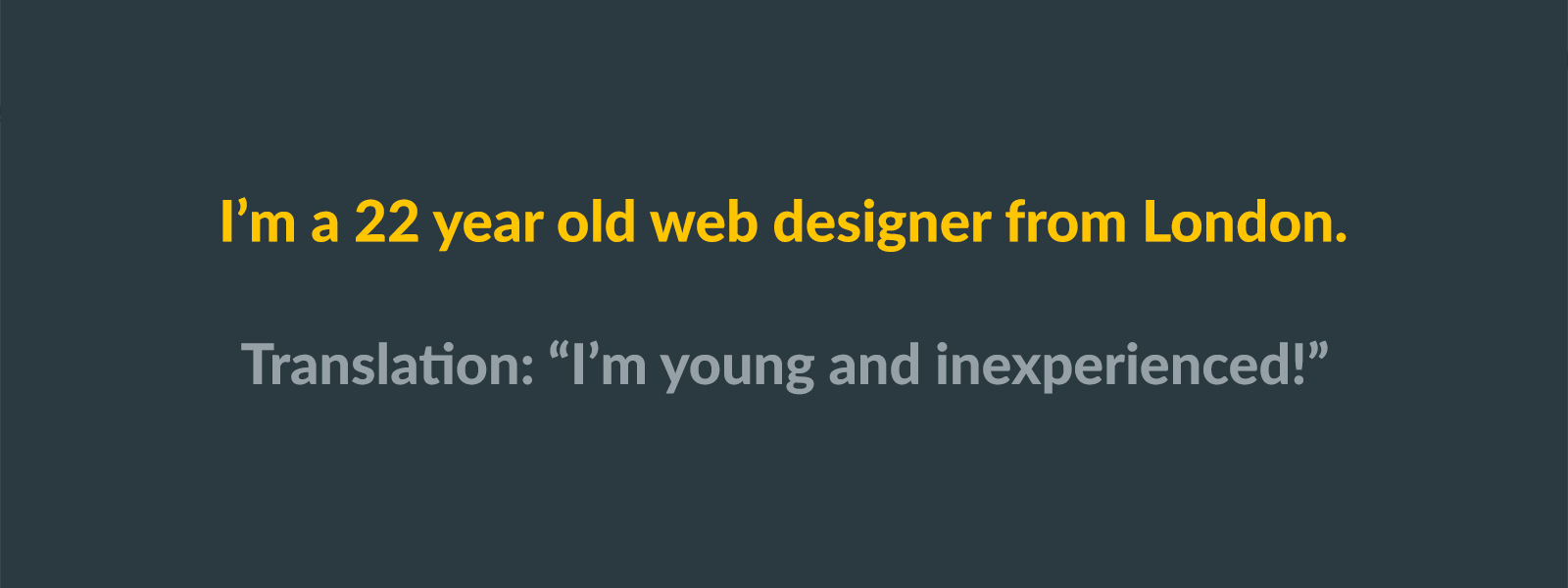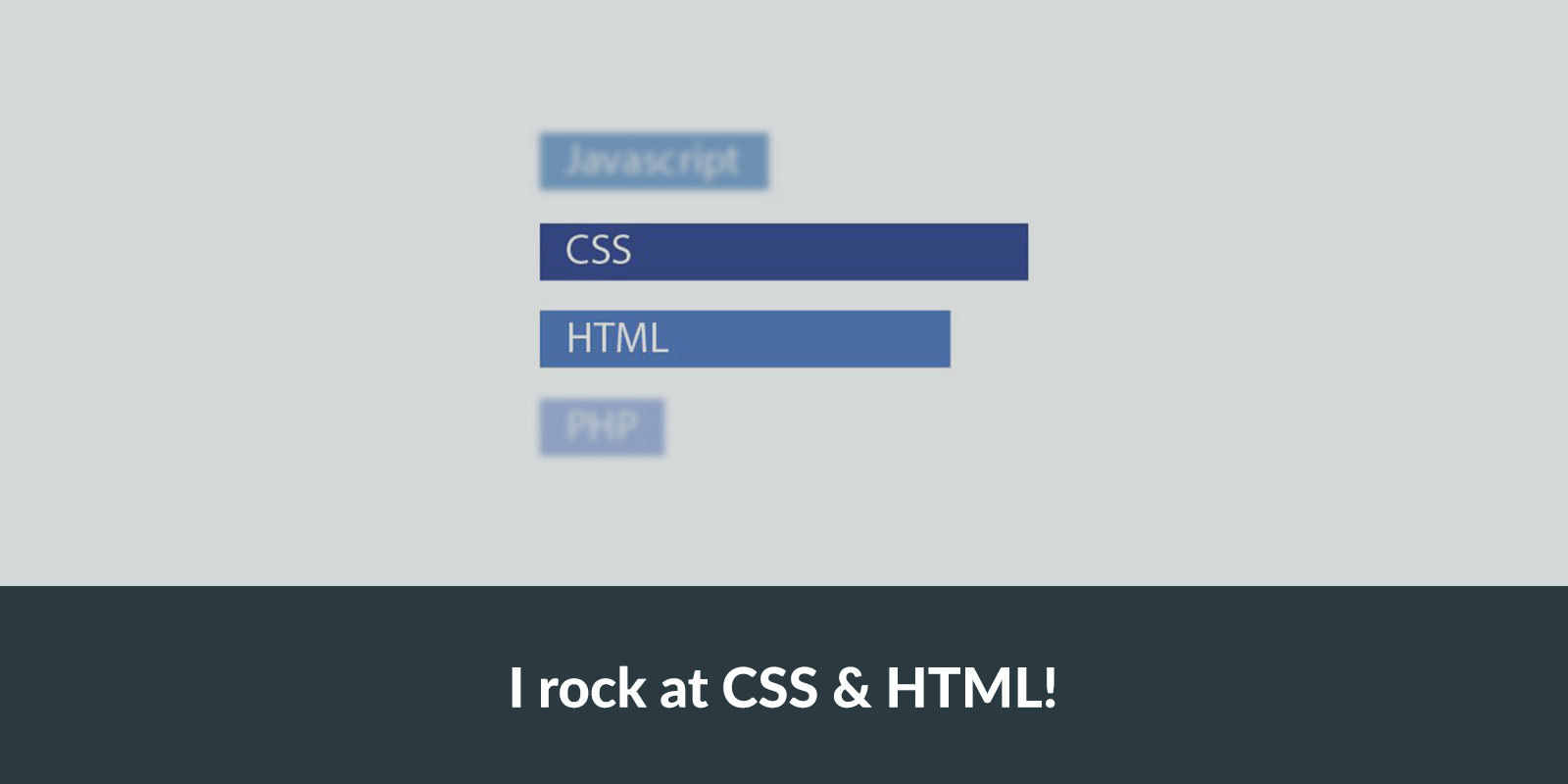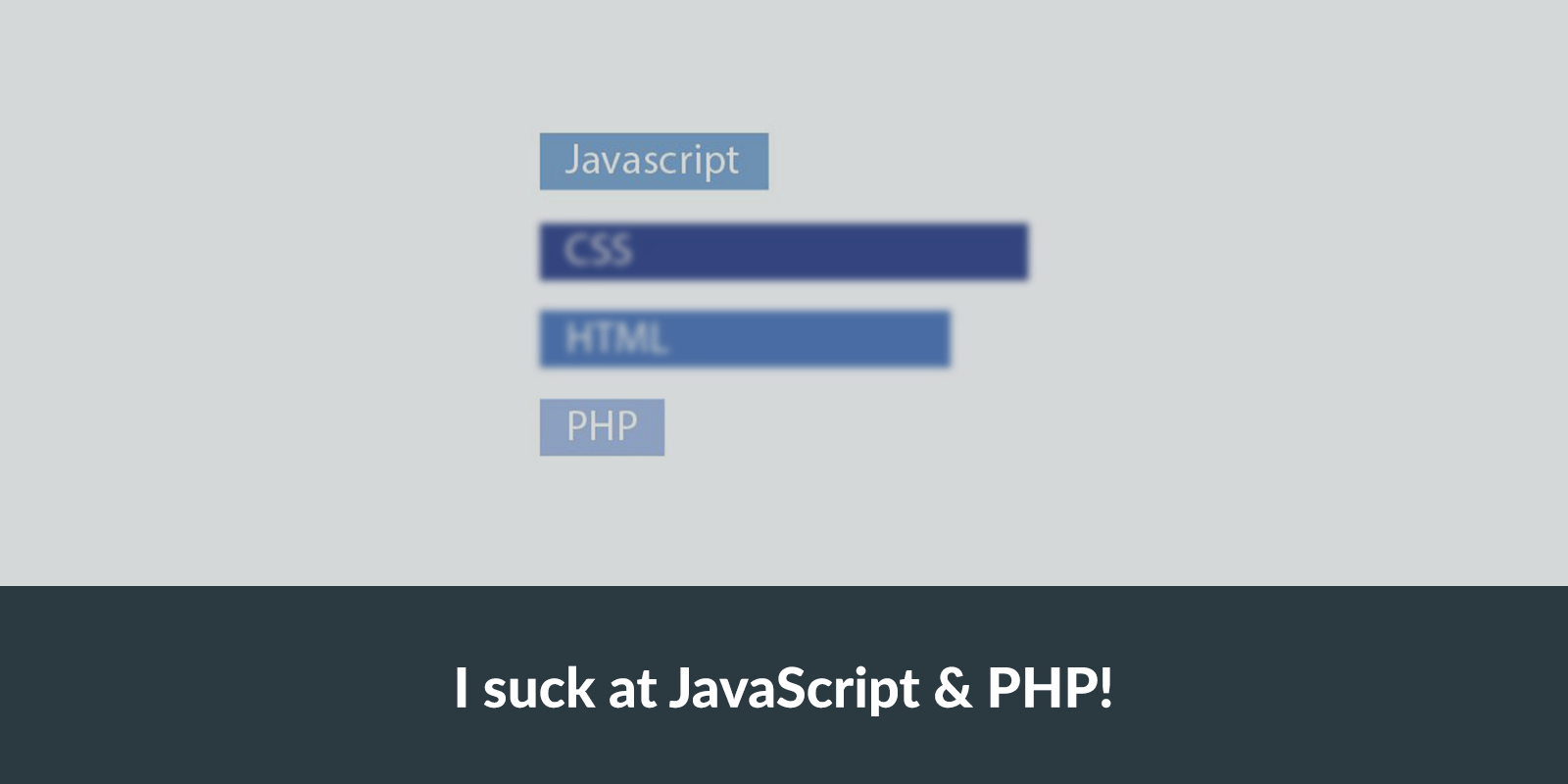6 Portfolio Design Mistakes That Drive Me Nuts
Your public portfolio is one of the most important things you’ll ever design. It presents you to the world and, if you’re a freelancer, tends to play a major role in whether or not people choose to hire you.
I’ve viewed a ton of online portfolios and today I’d like to walk through some of the weaknesses I see time and time again. Read on to see if you’ve made some of these mistakes.
1. Listing Your Age
Oddly enough, this is an extremely common piece of information to find on web designer portfolios. Designers feel the need to introduce themselves to make the page more personal, but can’t think of anything good to say and therefore revert to the basics: “I’m a 22 year old web designer from Papua New Guinea.”

Only Kids Brag on Their Age
This bugs me every single time I see it. It’s not the worst mistake that you could make, but it just reeks of a rookie move. This is evident by the fact that you never see someone bragging about being a 43 year old web designer. It’s only the young folks who feel the need to wear their age like a badge. I’m surprised I’ve never read one boasting about being “twenty and a half.”
“You never see someone bragging about being a 43 year old web designer.”
You’ll find that the experienced designers brag about exactly that: experience. “I’ve been building websites for Fortune 500 companies for over 10 years.” Now that’s a number to brag about.
Who Cares?
Here’s my gripe with this piece of information: who gives a crap? Do you want people to hire you based on talent and experience or on the year that you were born? If you don’t want potential clients to judge your age, then why are you broadcasting it?
The only time that a potential client might think twice about hiring someone based on age is if they seem too young, and as I said above the only people who do this are the twenties crowd so they’re really just shooting themselves in the foot.
Just The Necessities
Skip the fluff. I don’t want to know how old you are, what type of computer mouse you use or how often you buy a new pair of Converse. Tell me what you do and prove it with some solid examples. Which brings me to my next point.
2. Showing School Projects

Here’s another one that always gets me with the young designers. They always feel the need to show off their school projects. This ain’t your momma’s refrigerator junior, it’s a professional portfolio and clients want to see real work.
“This ain’t your momma’s refrigerator junior, it’s a professional portfolio.”
If It’s All You Have, Show It
I jumped a little bit ahead of myself with this one, let’s take a step back. If you’re fresh out of school and have no client work under your belt, then you should absolutely be encouraged to build a site to show it off. Lots of potential clients won’t mind one bit, especially if that inexperience comes with a low price tag.
Show Paid Work When Possible
That being said, once you’ve been out in the real world for a little while and have a few projects to show off, you should consider pulling down your student work. Otherwise, I’ll browse through your portfolio and think “Hey, this guy is really good! Oh wait, student work? He’s a noob, let’s move along. I need a pro.”
See how much of a double standard that is? Even if I think your work looks top notch at first, when I see those student projects, I immediately write you off as inexperienced. Does that suck? Absolutely! Is it fair? Nope. Is it how the world works. You bet.
3. Lack of Confidence

There’s a time and place to be humble, but your professional portfolio is not it. So many times I see really talented designers sell themselves short with self-deprecating website copy and it drives me nuts.
“There’s a time and place to be humble, but your professional portfolio is not it.”
“I’m just getting started” or “I hope to one day achieve…” these things might not sound so bad as you’re writing them but they shatter my confidence in your ability to deliver quality results.
Clients Mirror Your Confidence Level
If you can’t muster up enough confidence in yourself to tell me that you’re an awesome designer, odds are I’m not going to come to that conclusion for you.
As a potential client, how you talk about yourself tells me quite a bit. If you sound hesitant about your ability, I’m going to instantly pick up on that and either look elsewhere or exploit the weakness to get you to do more work for less money.
Acting a Fool
Now, that being said, there’s definitely a point where confidence can become hubris. If all of the copy on your portfolio makes you sound full of yourself, then that’s going to turn me away just as quickly as a lack of confidence.
This is a fine line to walk and it’s not always easy to find the balance. You have to figure how to tell me how great you are without sounding like you’re bragging about how great you are.
“You have to figure how to tell me how great you are without sounding like you’re bragging about how great you are.”
Often, the best way to do this is to let your work speak for itself. If your work really is amazing, then I won’t need you to try so hard to convince me of that fact.
4. Grammar
This one is really difficult for designers, including myself. These days I write more than I design and you still don’t have to look very hard to find a grammatical error that I’ve committed.
What I’m talking about here is the big stuff. It’s not the end of the world if you dangle a participle or end a sentence with a preposition, just make sure that a reasonably intelligent person can read your sentences without wondering how you managed to graduate from high school.
“Make sure that a reasonably intelligent person can read your sentences without wondering how you managed to graduate from high school.”
What If English Isn’t Your Thing?
The designers who I personally see really struggling in this area are those for whom English isn’t their first language. This becomes pretty easy to spot when reading website copy.
This is a touchy subject so I’ll first say “kudos,” because I personally only speak one language (many Americans are lame like that). If you speak two or more languages, you’re well ahead of me.
That being said, if I were to release my professional portfolio in another language, even if I spoke a little bit of that language, I’d still drop a few bucks to have someone perform a proper translation.
“You want to get the message across that you’re a good designer, don’t let bad grammar stand in the way of that fact.”
This is simply a matter of putting your best foot forward. You want to get the message across that you’re a good designer, don’t let bad grammar stand in the way of that fact.
5. Blog Neglect

Here’s one that we’ve all probably struggled with at one time or another. You start up a new blog and you’re brimming with enthusiasm for how often you’re going to update it.
You’re good about it at first, but then a few months down the line you start to slack off and before you know it that blog is a dead dream stuffed into the back of the closet with your astronaut helmet.
Digital Cobwebs
The interesting thing that you probably haven’t considered though is what message you’re sending to the people who visit your site. One of the first things that I do when I visit a blog is look at the date of the most recent post, what will this tell me about your blog?
“If your most recent post is over a year old, then it makes your site feel like it has cobwebs on it.”
If your most recent post is over a year old, then it makes your site feel like it has cobwebs on it. This makes me doubt whether you’re even actively taking on clients anymore. Was the freelance thing a failed project? Did you abandon client work in favor of a full time job?
Do It Well or Not at All
A blog makes a great addition to any portfolio, but if it’s not done well, it can actually drag you down. My advice is simple: either dedicate yourself to updating your blog on a regular basis with quality, interesting content, or simply don’t have one.
You don’t have to write a post every day or even every week, but at the very least you should try getting something up monthly to keep people interested.
“You don’t have to write a post every day or even every week, but at the very least you should try getting something up monthly to keep people interested.”
While we’re on the topic, use your portfolio’s blog as a place to share knowledge, disseminate information, and maybe score some search traffic, not to post photos of your cats or rant about who you’re voting for in the next election. This content belongs on your personal blog. Keep it there.
6. Showcasing Where You Suck
There’s an interesting trend in web design portfolios right now that not only showcases your skill set, but also weighs the different items against each other. This usually takes form of some little graph or visualization like the following.

Pretty neat right? This quickly gives me a feel for the services that you offer and the proficiency you have with each. Thanks for being so honest!
The problem of course with this method is that the way you read it and the way that I read it as a potential client are different. Here’s what you’re hoping that I see:

Unfortunately, here’s what I really see:

Don’t Point Out Your Weaknesses
It’s good to have strengths and weaknesses, everyone does. However, I’m not convinced that showcasing your weaknesses in a pretty graphic is the best marketing strategy.
“I’m not convinced that showcasing your weaknesses in a pretty graphic is the best marketing strategy.”
To utilize an old simile, this is like putting a gold ring in a pig’s snout. You may be trying to dress up your weaknesses with good design, but it’s likely a waste of effort because they’re still ugly.
Think Before You Design
The real takeaway from this article is to carefully consider each component of your web design portfolio, from the work you show to the copy that you write.
At every single stage, ask yourself whether you’re really improving the quality of the finished product or are in fact reducing the likelihood of someone hiring you. You’ll likely find that a lot of the added fluff that you thought was helping the page is really bringing you down.